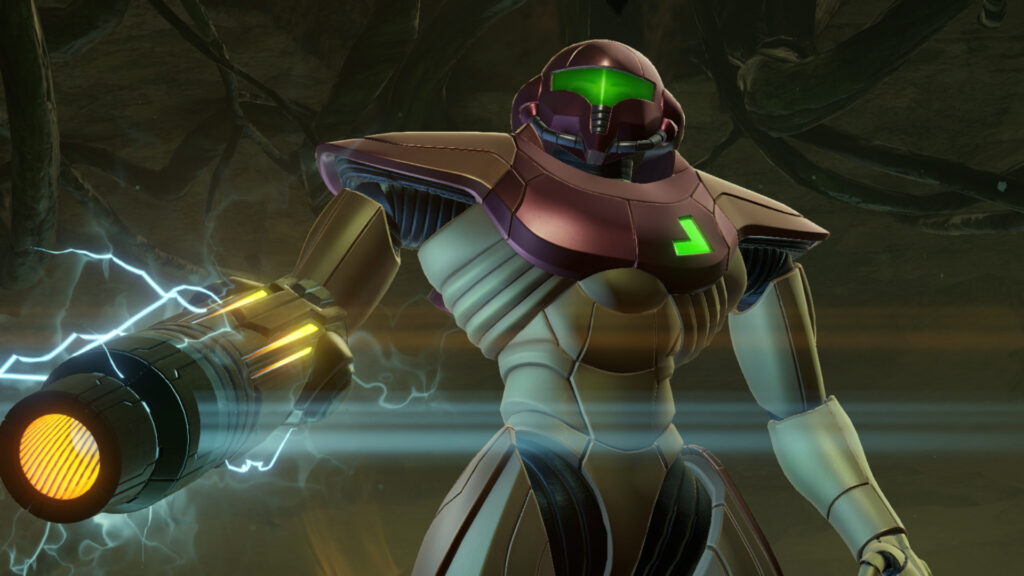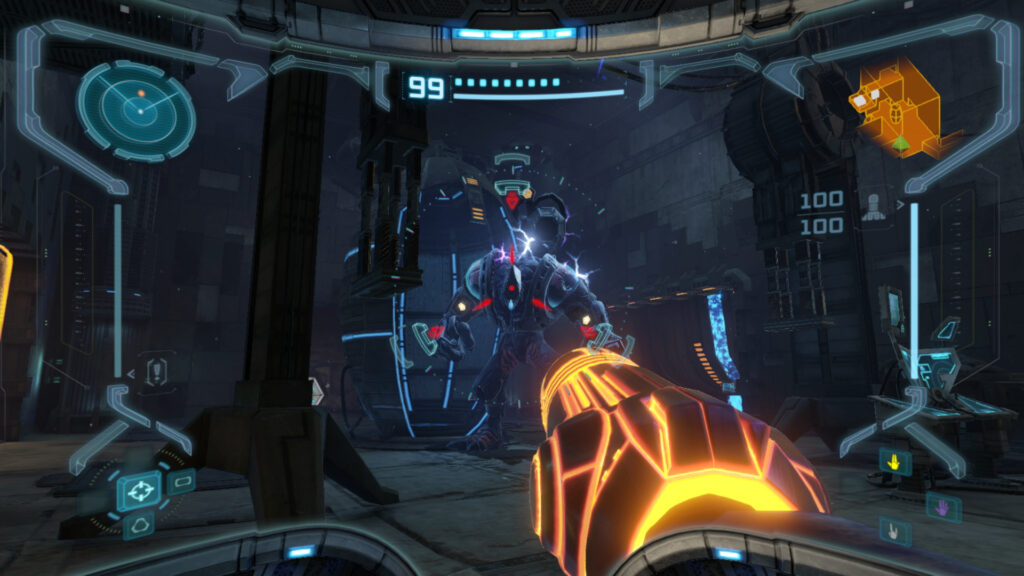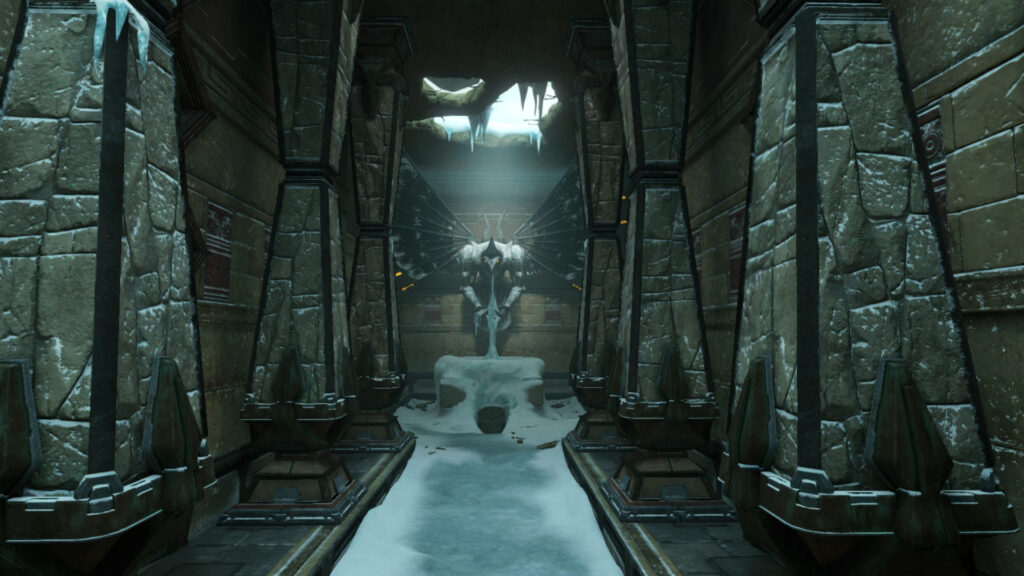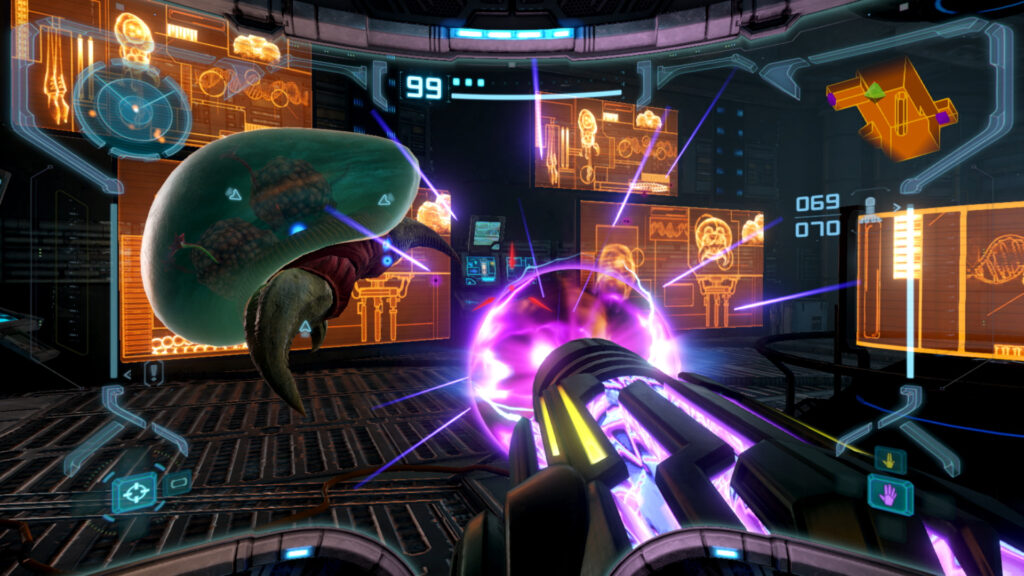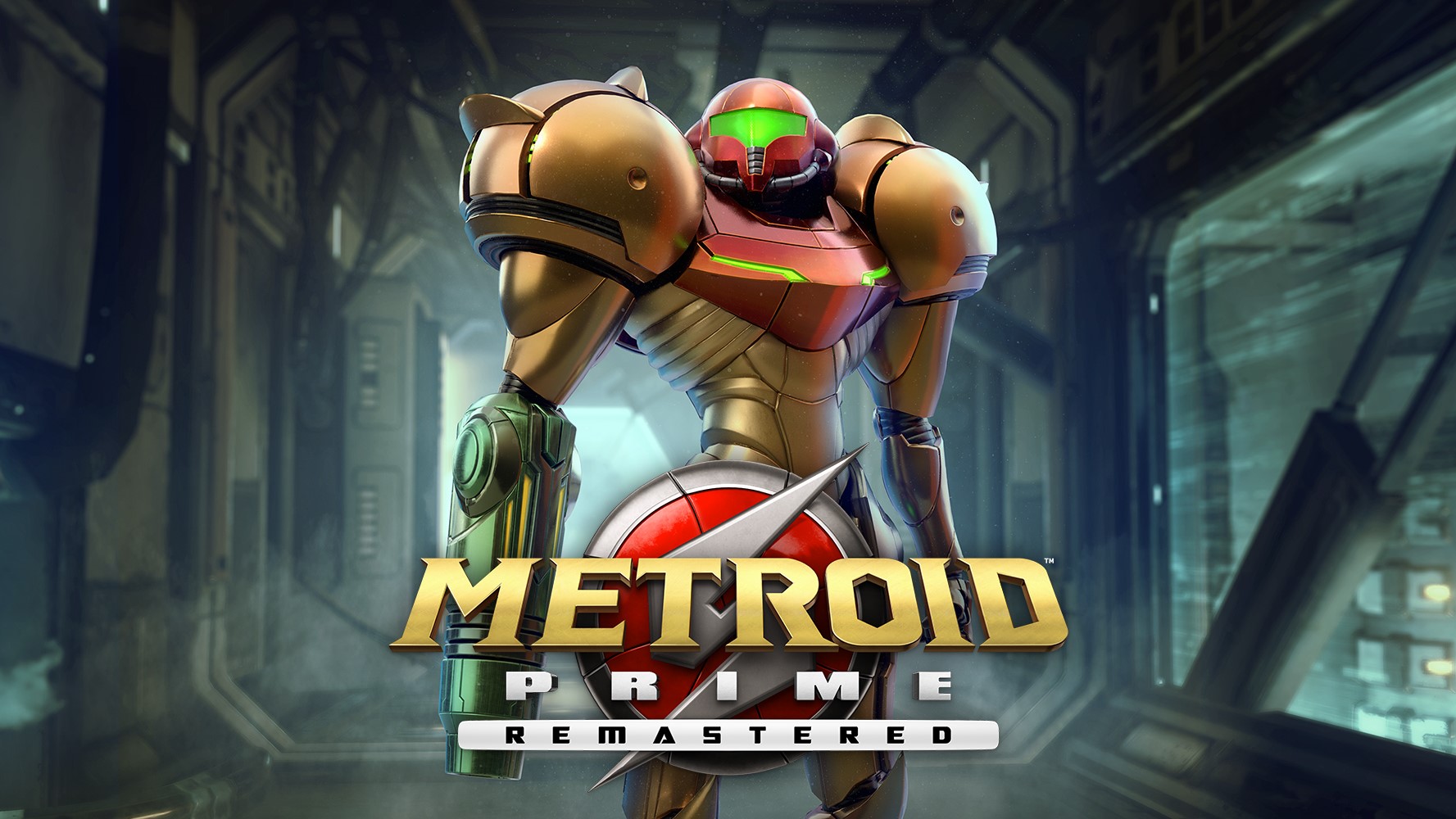
Metroid Prime Remastered (Switch)
Metroid Prime made its debut all the way back in 2002, with the GameCube release taking the long standing series in a new direction that few expected to work back in the day. 20 years later and its regarded a classic, one of the high points for the GCN, so does this remaster help Prime stand the test of time? Lets have a look.
Set between the events of Metroid and Metroid II, Metroid Prime takes place on the planet Tallon IV, formerly inhabited by the Chozo race wiped out by a meteorite several decades ago, which has been inhabited by space pirates who are trying to bleed the planet dry. The game opens with Samus receiving a distress signal from ta Space Pirate frigate, whose crew has been slaughtered by the Pirates’ own genetically modified subjects. Not long after arriving everything goes to hell and Samus is left scrambling after one of these escaping subjects who heads straight for the eerie Tallon IV.
Story has been kept the same, even plays out the same with just some minor visual changes in some cutscenes, so you can get about a dozen or so hours out of it if little exploration is done or scanning everything for that 100% is kept to the minimum. Fans of the original do get some extra goodies to look forward to with the Extra’s section. As you progress in the game & scan items this section on the main menu fills up with all manner of extra tidbits and unlockable art, which will also give added reason to explore every nook & cranny.
Visually Metroid has received a bigger upgrade than expected. While it still retains the look of the original game for the most part, there’s been plenty of work done on the environments and models in particular that will please many. Granted, more keen eyed fans of the game may notice the odd missing effect or small detail change, but its overall a tastefully done remaster and further increases the eeriness of Tallon IV. The uptick in detail is apparent too as soon as you start the opening prologue section in space, with it only getting more noticeable once planetside due to the improved lighting & texture detail.
Performance with Switch games can be usually hit & miss, but here there isn’t really anything to worry about in that regard given the original ran at 60fps on the GameCube. The game is almost flawless with its 60fps here, handheld has no problem as it runs just a tad under native res to keep the framerate locked up, with rejoicingly a boost to resolution (900p) when docking the Switch while still keeping things smooth.
Those that have sampled the game before, little has changed aside from controls so you know what you are going to get. For the newcomers you have a great attempt at bringing the classic 2D/2.5D gameplay of the Metroid series to the FPS genre. You’ll generally be making your way through stages as the classic games, taking on foes and getting past puzzles, to fight more powerful bosses later. Skirmishes play out like a typical FPS, the scanning can also be used to find weak spots or weaknesses to weapon upgrades later, but you can also lock onto enemies to make use of a dodge etc. You lose a lot of the suits functionality after the opening prologue, so will spend the early sections returning that to your repertoire as its needed to progress – once you’ve got your rocket launcher back it can be used to blow off doors for example. To be honest the gameplay loop holds up really well considering the age of the original, not much QOL has been needed so you get a pretty raw version of the game that released 20 years ago.
There’s gotta be some downsides right? And there is but its probably subjective given how much stuff like the constant scanning, boss difficulty, backtracking etc from the original bothers you. The most noticeable one is the somewhat limited skirmishes. Its probably the one area that hasn’t aged as well given they usually consist of a few enemies in a tight area – it is a GameCube game after all. For a remaster the controls also have a lot of choice, there’s still a classic option too for nostalgia, but each has its ups & downs. Dual stick should be familiar nowadays and works well enough aside from the naff joycons, Pointer gives you classic Wii style control but suffers drifting a bit much, and there’s a Hybrid classic mode that adds in gyro aiming. Personally would have stuck with the Wii style controls, it has a single button reset for the drift at least, if not for a speedy delivery of a Hori Split Pad (and Power A for docked) meaning dual-stick ended up winning out.
To be honest as someone who’s more into the classic setup and not really nostalgic for the Prime series, it did still feel good to return given long wait for the fourth iteration. As remasters go this one can be put in the good pile, its tastefully done with the gameplay being kept intact (with new control schemes), though that does mean its also a product of its time with everything that entails, and a graphical upgrade that generally stays faithful to the original with a smooth 60fps regardless of how you play. If you haven’t played the game before, or wasn’t too interested back in the day, then the Remaster is the perfect way to finally give this GameCube classic a chance.
Summary
It’s Metroid Prime with better graphics.
Geoffrey Wright
Latest posts by Geoffrey Wright (see all)
- Llamasoft: The Jeff Minter Story (PC) - July 26, 2024
- Anger Foot (PC) - July 24, 2024
- Mushoku Tensei: Jobless Reincarnation Quest of Memories (PC) - July 12, 2024

